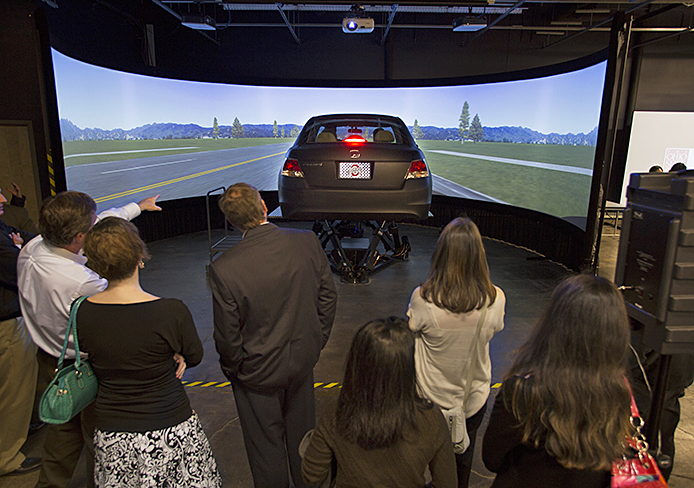
Ohio State is partnering with Ford to create a new pedestrian safety app. Credit: Courtesy of Janet Weisenberger
Through a research alliance with Ford, Ohio State’s Automated Driving Lab is working to protect pedestrians with a pocket-sized solution: a safety app for mobile phone users and drivers.
An estimated 7,485 pedestrians were killed in 2021, according to a preliminary report from the Governors Highway Safety Association. Pedestrian fatalities are expected to have increased in 2022, according to the National Highway Traffic Safety Administration.
Bilin Aksun-Guvenc, co-director of the lab, said in an email she believes the number of pedestrian accidents have been increasing, which led the Automated Driving Lab — Ohio State’s main research lab for “connected and autonomous driving technologies” — to research what makes drivers vulnerable on the road and develop a Vehicle-to-Pedestrian safety app to run in the background of a phone.
Aksun-Guvenc, a professor in mechanical and aerospace engineering, said the app uses Bluetooth Low Energy advertisements — a way of broadcasting and receiving data between devices — to alert drivers of nearby pedestrians and estimate potential collisions. Those without mobile phones can use the same technology with beacons — small, wireless devices, she said.
“The app on the vulnerable road user side just transmits data while the same app in the vehicle just collects data,” Aksun-Guvenc said.
Aksun-Guvenc had the opportunity to work on the app with her husband Levent Guvenc, co-director of the Automated Driving Lab and a professor in the Departments of Mechanical and Aerospace Engineering and Electrical and Computer Engineering.
Guvenc said in an email it makes sense to “run a low-footprint and low-energy app in the background.” He said the app, developed by Sukru Yaren Gelbal — a postdoctoral researcher in the lab — is currently only available on Android phones, but Guvenc said he hopes to bring the app to iPhones.
“We started work on an Apple extension and hope that we will be able to find funding to do that in the future,” Guvenc said.
Guvenc said the app can help Columbus reach one of its Vision Zero goals — “ending crash-related fatalities and serious injuries,” according to the organization’s website. Other Vizion Zero goals include installing more crosswalks and improving intersection safety.
Aksun-Guvenc said the app can also assist visually impaired pedestrians, wheelchair users and food robots on campus to complement existing Ohio State apps.
“Integration of the V2P vulnerable road user safety app into the Ohio State app and into [Campus Area Bus Service] buses, for example, would help both the bus drivers and the users of the bus service,” Aksun-Guvenc said.
As the technology continues developing, Aksun-Guvenc said the goal remains the same.
“While publishing more papers and attracting more funding are important goals, the main purpose of academic research is discovery and innovation to help society and help solve important societal challenges,” Aksun-Guvenc said.


